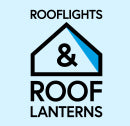How to Reduce Glare and Heat with the Right Rooflight Design

How to Reduce Glare and Heat with the Right Rooflight Design
Rooflights are a fantastic way to bring natural light into your home and create a bright, airy atmosphere. However, while natural light is essential, too much of it can lead to unwanted heat buildup and glare, making your living space uncomfortable. The good news is that with the right rooflight design, you can enjoy the benefits of natural light without the downsides of excessive heat or glare. Here are some expert tips on how to reduce glare and heat with the right rooflight design.
1. Opt for Double or Triple-Glazed Rooflights
One of the most effective ways to reduce heat transfer and glare is by selecting rooflights with double or triple glazing. These rooflights are designed with multiple layers of glass, each of which works to reduce heat loss during the winter and minimise heat gain during the summer. Double and triple-glazed units also have excellent insulation properties, keeping the indoor temperature more consistent year-round.
In addition to providing better temperature control, the layers of glazing help to diffuse sunlight more evenly, which can significantly reduce the intensity of glare. This makes double or triple-glazed rooflights a top choice for managing both heat and light.
2. Choose Rooflights with Heat Reflective Coatings
Many modern rooflights come with heat-reflective coatings that help to control the amount of solar radiation that enters your home. These coatings work by reflecting a portion of the sun’s rays away from the rooflight, preventing excessive heat from entering your living space.
Heat-reflective coatings are especially beneficial in areas that experience long, hot summers or where solar gain is a concern. By reducing the amount of heat entering your home, you can keep your interiors cooler and reduce your reliance on air conditioning, which can save energy and lower cooling costs.
3. Consider Tinted or Frosted Glass
If you’re looking to reduce glare while still allowing natural light to flood your home, consider opting for tinted or frosted glass rooflights. These types of glass can filter out harsh sunlight, reducing the intensity of glare without sacrificing the amount of light entering the room.
Tinted glass is particularly effective at cutting down on glare, while frosted glass offers a softer, diffused light. Both options can create a more comfortable living environment, especially in spaces where glare can be disruptive, such as home offices or media rooms.
4. Use Rooflight Blinds or Shades
While selecting the right rooflight is essential, you can also reduce glare and heat by adding adjustable rooflight blinds or shades. These can help you control the amount of light that enters through your rooflights, allowing you to block out excess sunlight during the hottest parts of the day or when glare is at its worst.
Blinds come in various materials, including heat-resistant options that can help reduce the heat entering through the rooflight while still letting some natural light in. You can also choose from manual or motorized blinds to suit your preferences.
5. Install Rooflights Strategically
The placement of your rooflights plays a significant role in reducing glare and heat. Installing rooflights on the north side of your home will provide consistent natural light without the direct sunlight exposure that comes from the south-facing side. This can help to reduce the amount of heat gained during the day while still allowing you to enjoy daylight.
For homes with a flat roof, skylights installed at a slight angle can help to avoid direct sunlight during peak hours. By considering the orientation and positioning of your rooflights, you can make the most of natural light while minimising the risk of overheating or intense glare.
6. Choose Rooflights with Low Solar Gain (G-value)
The solar heat gain coefficient (G-value) refers to the amount of solar heat that enters a building through the windows or rooflights. When selecting a rooflight, look for options with a low G-value. This means that the rooflight is designed to allow less solar heat to pass through, reducing the overall heat gain in your home.
Rooflights with a low G-value can significantly reduce the need for air conditioning in the summer and help maintain a comfortable indoor temperature year-round. Choosing rooflights with a low G-value is particularly important in areas with high levels of sunlight or where energy efficiency is a top priority.
Conclusion
Choosing the right rooflight design is key to reducing both glare and heat in your home. By opting for double or triple-glazed rooflights, heat-reflective coatings, tinted or frosted glass, and strategically placed rooflights, you can enjoy natural light without the discomfort of excessive glare or heat. Additionally, adding blinds or shades can give you even more control over the amount of light entering your home. With these tips, you can enhance the beauty and comfort of your home while managing the effects of sunlight and heat effectively.
- Josh Hartim






